Ho Chi Minh City: A 52-year-old patient with a parotid gland tumor underwent surgery to preserve 5 nerve branches, avoiding facial paralysis, in half the time compared to normal.
On the morning of May 10, Mr. Tran Thanh Vu (52 years old, An Giang) had a re-examination with Master, Doctor, CKII Doan Minh Trong (Head - Face - Neck Unit, Breast Surgery Department, Tam Anh General Hospital, Ho Chi Minh City). The ear incision was intact, the sutures left no scars. The pathological results showed that the tumor was benign.
In 2020, he saw a small lump on his right ear, thinking it was a normal pimple but he couldn't squeeze it out. By 2021, the tumor was larger than 0.5 mm but he was afraid to go to the doctor due to the complicated Covid-19 epidemic. Recently, the lump gradually grew into a lump on the skin surface. Fearing cancer, he went to the hospital for a check-up.
Doctor Trong examined and felt a non-moving mass, diagnosed parotid gland tumor and ordered an ultrasound. The results showed a 4 cm mass compressing the nerve that controls the facial muscles (cranial nerve VII) and indicated surgery.
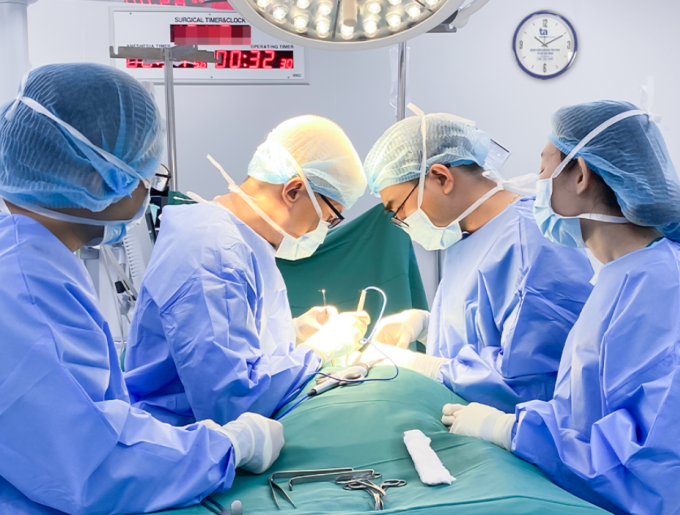
Doctor Trong (far left) performs surgery to remove a patient's parotid gland tumor. Photo: Nguyen Tram
With 25 years of experience, Dr. Trong assessed: "This is a difficult surgery, because if the dissection is not skillful, the patient will have facial nerve paralysis, causing facial distortion and paralysis."
On the morning of May 3, the surgical team removed the superficial lobe of Mr. Vu's parotid gland. Dr. Trong separated the facial nerve from the parotid gland tissue and tumor while preserving the five thread-like nerve branches, and removed the entire tumor. The support of a new generation of American ultrasonic knives helped the doctor burn, cut, and weld to stop bleeding and prevent secretions during surgery.
The patient did not lose much blood, the surgery time was reduced by half (only 1.5 hours) compared to using a conventional scalpel, there was no facial paralysis, and recovery was quick. In the first hours after surgery, the patient did not bleed, secretions and fluid accumulation were reduced, there was no pain, and the patient ate and drank normally. After 18 hours, the patient had no complications and was discharged on May 5.
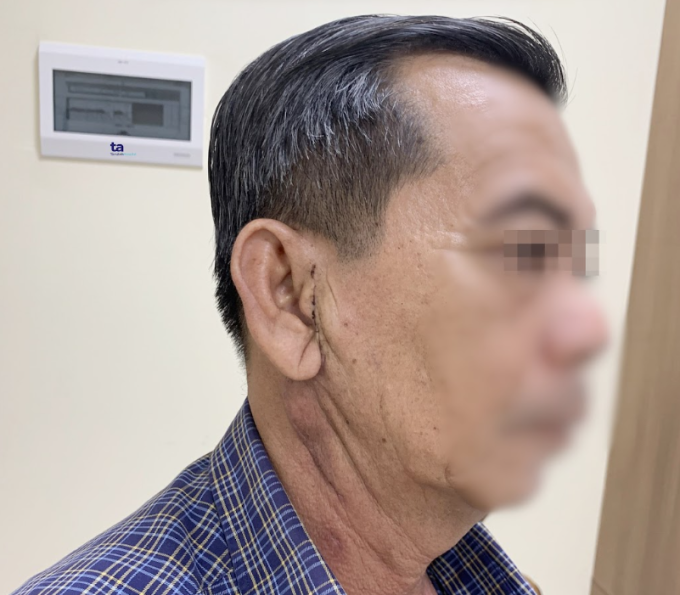
The incision of the parotid gland tumor healed without leaving any scars. Photo: Nguyen Tram
Mr. Vu shared: "Many people told me not to have surgery but to take traditional medicine and apply leaves to shrink the tumor. But when the doctor explained my condition, I decided to have surgery." The doctor advised against using methods such as rituals, applying leaves, taking folk medicine... as they could cause the tumor to become infected and lead to dangerous complications.
Dr. Trong said that the parotid gland is the largest salivary gland in the body, located on the outer part of the face, near the angle of the jaw on each side, surrounding the facial nerve, the external vein and the terminal branches of the external carotid artery. In addition, the body also has submandibular, sublingual salivary glands and minor salivary glands scattered throughout the oral cavity. Parotid tumors account for 80% of salivary gland tumors, of which 20% are malignant.
Many benign tumors are large in size, causing difficulty swallowing and compressing the facial nerve, leading to facial paralysis. Most parotid tumors, whether benign or malignant, require surgery. The extent of surgery depends on the nature of the tumor and the doctor's recommendations. When an abnormality is detected or a tumor is suspected, the patient should be examined for timely monitoring and treatment to avoid permanent facial nerve paralysis.
Nguyen Tram
* Patient's name has been changed.
Source link





![[Photo] Overcoming all difficulties, speeding up construction progress of Hoa Binh Hydropower Plant Expansion Project](https://vstatic.vietnam.vn/vietnam/resource/IMAGE/2025/4/12/bff04b551e98484c84d74c8faa3526e0)
![[Photo] Closing of the 11th Conference of the 13th Central Committee of the Communist Party of Vietnam](https://vstatic.vietnam.vn/vietnam/resource/IMAGE/2025/4/12/114b57fe6e9b4814a5ddfacf6dfe5b7f)



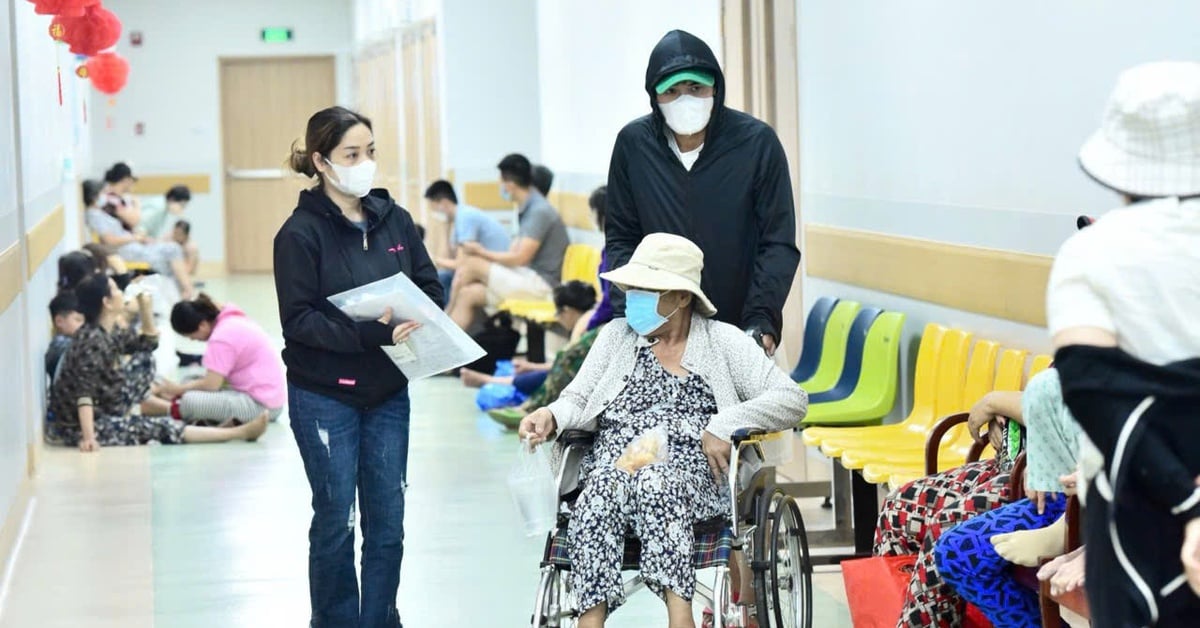


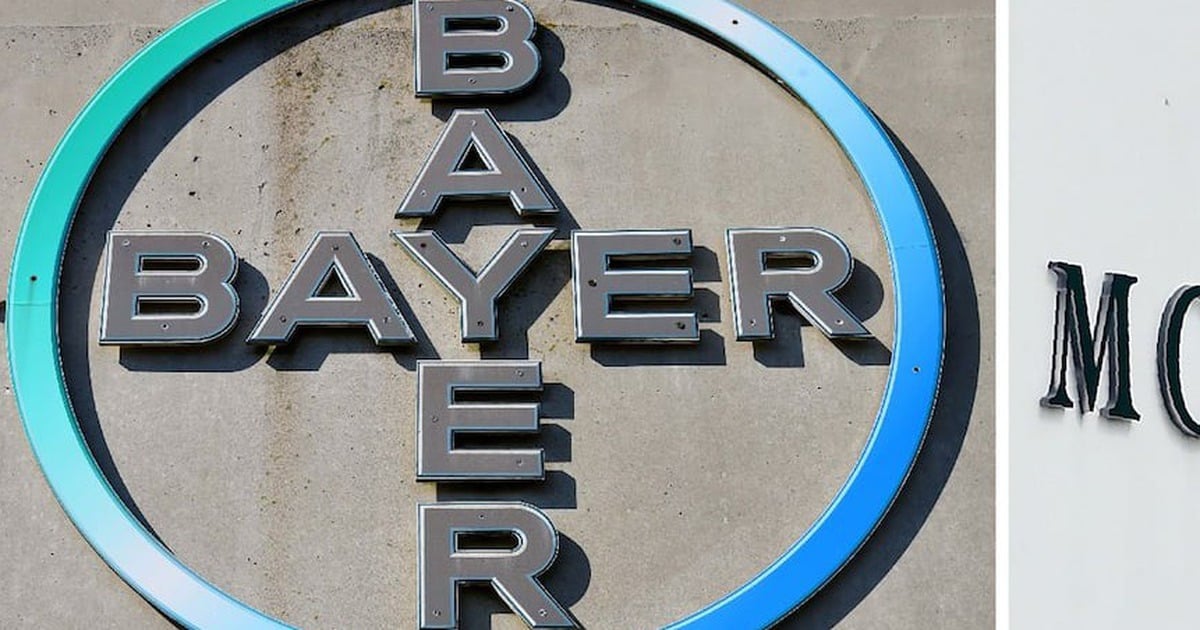

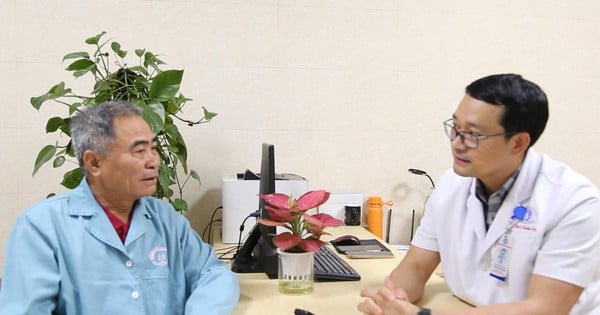

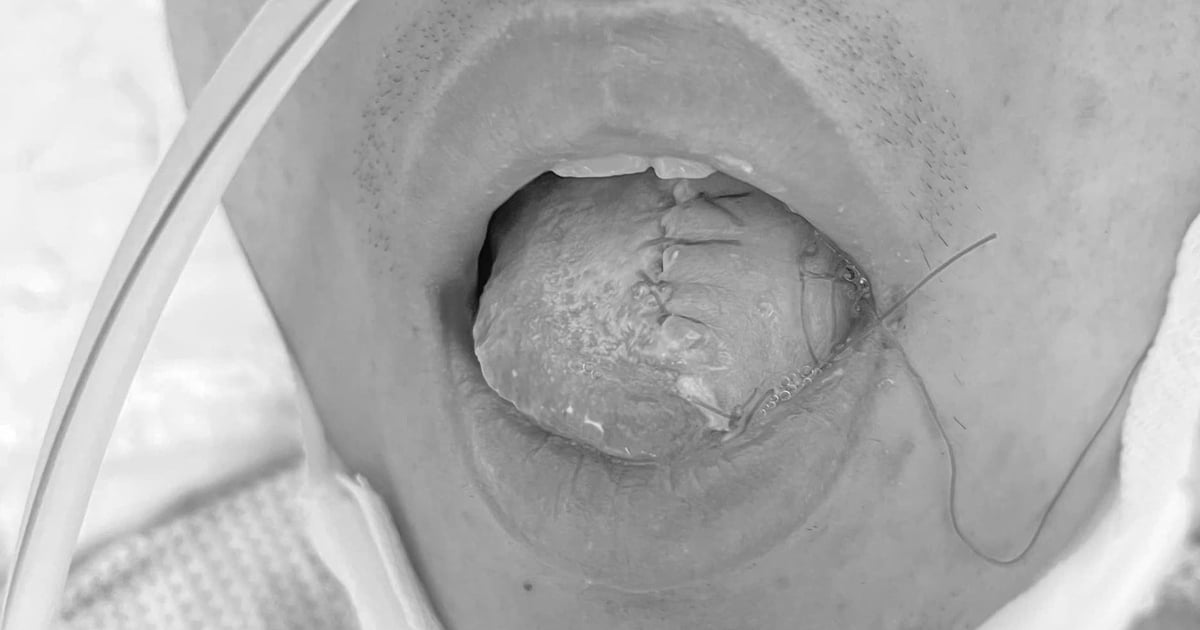
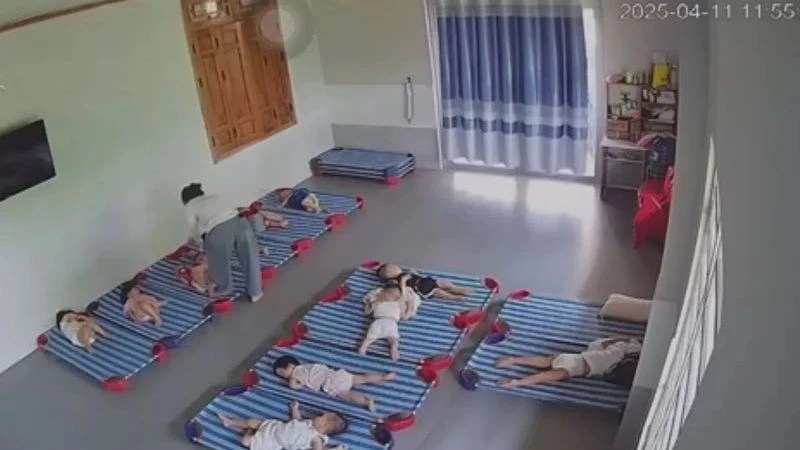
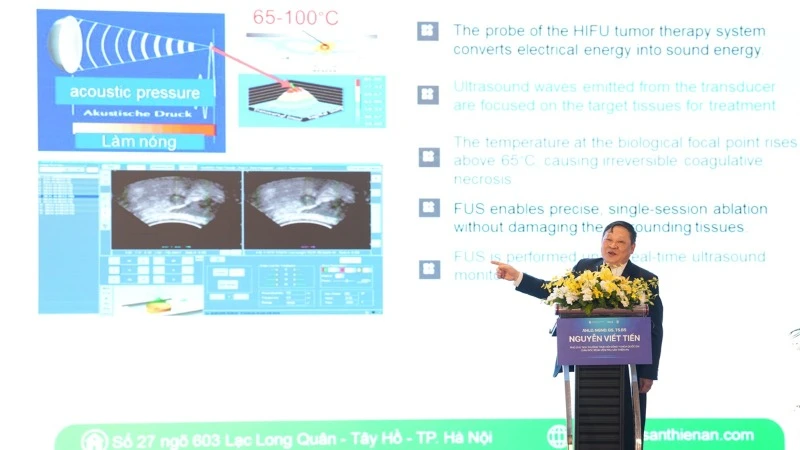
![[Video] First time in Vietnam: Successful implantation of 3rd generation partial artificial heart](https://vstatic.vietnam.vn/vietnam/resource/IMAGE/2025/4/12/8817412224094c68ba2c744b7bd5cfea)
























































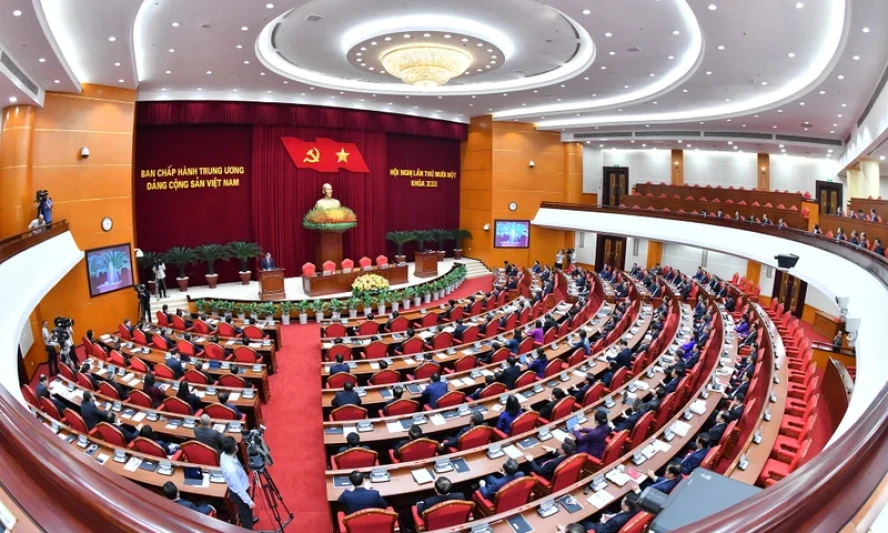
















Comment (0)